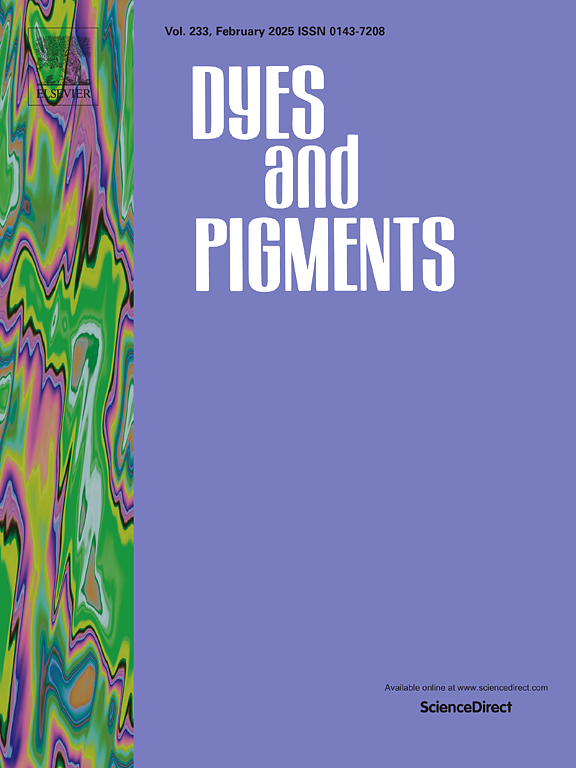Immobilization of the hydrazone configuration via decyanidation for pyridone based heterocyclic dyes showing enhanced pH stability
IF 4.1
3区 工程技术
Q2 CHEMISTRY, APPLIED
引用次数: 0
Abstract
Disperse dyes having pyridine-2,6-dione based coupling components often suffer from deteriorated uniformity in the fiber-dyeing processes due to pH-induced azo-hydrazone tautomerism. To overcome this deficiency, the functional group transformation (FGT) strategy was employed to convert the cyano group of one pyridine-2,6-dione derivative to a less electron-withdrawing amide group or even a hydrogen atom, so as to hinder the transformation from the hydrazone form to deprotonated azo form, and hence improve the acid-base stability of the target dyes. As a result, six new hydrazone dyes were synthesized with strong acid-base stability, which can be confirmed by related UV–Vis spectra. Reduced charge delocalization in the modified dyes, weakened molecular polarization, and increased energy barrier for the intramolecular transfer of the hydrazone proton were believed to play important roles in the fixation of hydrazone configuration for the new dyes. Detailed theoretical calculations further demonstrated the increased conversion energy barriers. The X-ray crystal structure analysis revealed that the decyano pyridine-2,6-dione dyes contain denser fused six-membered intramolecular hydrogen-bonding rings, and the hydrogen bond lengths are significantly shorter than those in previously reported pyridine-2,6-dione based dyes, which further stabilize the hydrazone protons of dyes in this work. The fundamental FGT strategy elucidated in this study is suggested to be helpful in the improvement of dyeing performance for a wide variety of existing hydrazone dyes.
求助全文
约1分钟内获得全文
求助全文
来源期刊

Dyes and Pigments
工程技术-材料科学:纺织
CiteScore
8.20
自引率
13.30%
发文量
933
审稿时长
33 days
期刊介绍:
Dyes and Pigments covers the scientific and technical aspects of the chemistry and physics of dyes, pigments and their intermediates. Emphasis is placed on the properties of the colouring matters themselves rather than on their applications or the system in which they may be applied.
Thus the journal accepts research and review papers on the synthesis of dyes, pigments and intermediates, their physical or chemical properties, e.g. spectroscopic, surface, solution or solid state characteristics, the physical aspects of their preparation, e.g. precipitation, nucleation and growth, crystal formation, liquid crystalline characteristics, their photochemical, ecological or biological properties and the relationship between colour and chemical constitution. However, papers are considered which deal with the more fundamental aspects of colourant application and of the interactions of colourants with substrates or media.
The journal will interest a wide variety of workers in a range of disciplines whose work involves dyes, pigments and their intermediates, and provides a platform for investigators with common interests but diverse fields of activity such as cosmetics, reprographics, dye and pigment synthesis, medical research, polymers, etc.
 求助内容:
求助内容: 应助结果提醒方式:
应助结果提醒方式:


